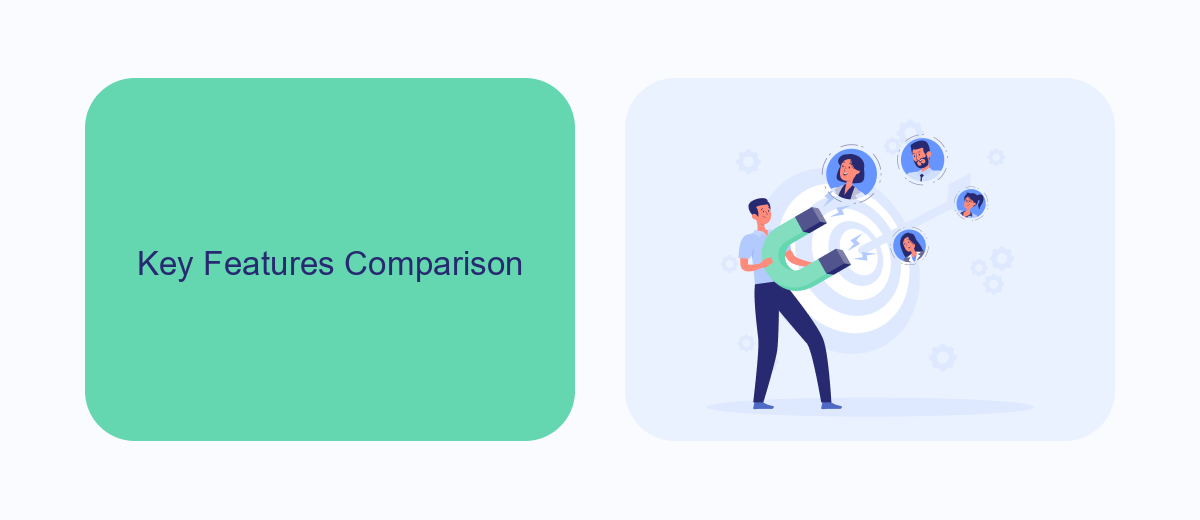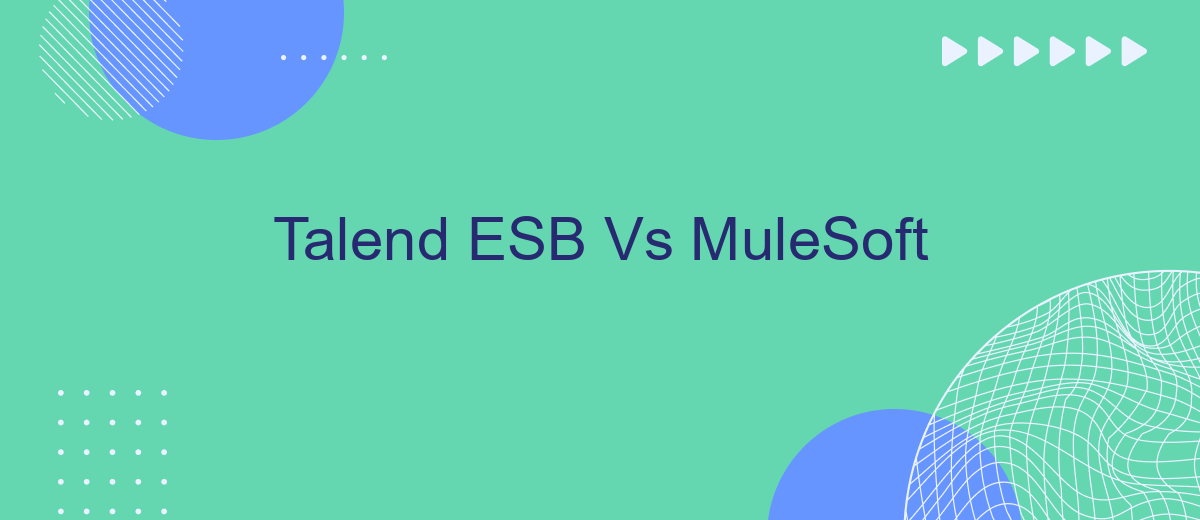When considering robust integration solutions, Talend ESB and MuleSoft stand out as two leading platforms. Both offer comprehensive tools for connecting diverse systems, applications, and data sources, but they differ in features, pricing, and ease of use. This article delves into a detailed comparison of Talend ESB and MuleSoft, helping you determine which solution best fits your organization’s needs.
Introduction
In the rapidly evolving landscape of enterprise integration, choosing the right tool to manage and streamline your processes is crucial. Talend ESB and MuleSoft are two leading solutions that offer powerful capabilities for integrating various systems and applications. Both platforms provide unique features and benefits, making it essential to understand their differences to make an informed decision.
- Talend ESB: Known for its open-source foundation and extensive data integration capabilities.
- MuleSoft: Renowned for its API-led connectivity and robust ecosystem.
- SaveMyLeads: A service that simplifies the process of integrating different platforms and automating workflows.
As businesses strive for efficiency and agility, the choice between Talend ESB and MuleSoft can significantly impact their integration strategies. This article delves into the core functionalities, strengths, and limitations of each platform, providing insights to help you select the best solution for your enterprise needs.
Key Features Comparison

Talend ESB and MuleSoft are both robust integration platforms, but they have distinct key features. Talend ESB offers a user-friendly interface with a strong focus on data integration and transformation. It supports a wide range of connectors and components, making it ideal for complex data workflows. MuleSoft, on the other hand, excels in API management and offers a comprehensive Anypoint Platform that integrates various services seamlessly. It provides a rich set of tools for designing, deploying, and managing APIs, which is particularly useful for businesses focusing on API-led connectivity.
Both platforms offer extensive support for cloud and on-premises deployments, but MuleSoft's Anypoint Exchange provides a marketplace for reusable assets, enhancing development efficiency. Talend ESB's open-source nature allows for greater customization and flexibility. Additionally, services like SaveMyLeads can complement these platforms by automating lead data integration, ensuring that businesses can streamline their workflows without extensive manual intervention. In summary, the choice between Talend ESB and MuleSoft largely depends on the specific integration needs and the emphasis on either data transformation or API management.
Architecture Analysis

When comparing the architecture of Talend ESB and MuleSoft, it's essential to consider their core components and how they facilitate integration processes. Both platforms offer robust solutions, but their approaches differ significantly.
- Talend ESB: Talend's architecture is based on an open-source model, providing flexibility and customization. It includes a wide range of connectors and components, allowing for seamless integration with various systems. The Talend Studio offers a graphical interface for designing integration flows, making it accessible for users with different technical backgrounds.
- MuleSoft: MuleSoft's architecture is centered around its Anypoint Platform, which combines iPaaS (Integration Platform as a Service) and API management. MuleSoft provides a unified platform for designing, deploying, and managing APIs and integrations. Its API-led connectivity approach ensures that integrations are reusable and scalable across the organization.
Both Talend ESB and MuleSoft offer robust architectures suited for different integration needs. Talend's open-source flexibility contrasts with MuleSoft's comprehensive, unified platform. Depending on the specific requirements of your organization, including factors like budget, scalability, and ease of use, one may be more suitable than the other.
Cloud Capabilities

When it comes to cloud capabilities, both Talend ESB and MuleSoft offer robust solutions for integrating various cloud services. Talend ESB provides extensive support for cloud platforms, allowing users to seamlessly connect, manage, and transform data across different cloud environments. Its cloud integration tools are designed to simplify complex data workflows, ensuring that businesses can efficiently leverage their cloud infrastructure.
MuleSoft, on the other hand, excels in providing a comprehensive cloud integration platform through its Anypoint Platform. This platform enables users to design, build, and manage APIs and integrations with ease. MuleSoft's cloud capabilities are particularly strong in supporting hybrid cloud environments, making it a versatile choice for organizations with mixed infrastructure.
- Talend ESB: Seamless cloud data integration
- MuleSoft: Comprehensive API management and hybrid cloud support
- SaveMyLeads: Automated lead integration for enhanced connectivity
Both Talend ESB and MuleSoft offer powerful cloud capabilities that cater to different organizational needs. While Talend focuses on simplifying data workflows across cloud platforms, MuleSoft provides a robust API management solution. Additionally, services like SaveMyLeads can further enhance these integrations by automating lead data processes, ensuring seamless connectivity and efficiency.
Community and Support
Both Talend ESB and MuleSoft boast active and engaged communities, providing a wealth of resources for users. Talend ESB has a robust community forum where users can seek advice, share experiences, and troubleshoot issues. Additionally, Talend offers extensive documentation and a variety of training programs to help users get up to speed. MuleSoft, on the other hand, also has a vibrant community with forums, webinars, and a comprehensive knowledge base. MuleSoft’s Anypoint Community provides users with a platform to collaborate and learn from each other, making it easier to troubleshoot and optimize their integrations.
Support options for both platforms are comprehensive, though they vary in scope and accessibility. Talend offers multiple tiers of support, including enterprise-level options with dedicated account managers and 24/7 support. MuleSoft provides similar support structures, including premium support plans that offer faster response times and dedicated technical assistance. For those looking to streamline their integration processes further, services like SaveMyLeads can be invaluable. SaveMyLeads offers automated workflows that can simplify the integration process, making it easier for businesses to connect various applications without extensive technical know-how.
FAQ
What are the main differences between Talend ESB and MuleSoft?
Which platform is more cost-effective?
How do both platforms handle scalability?
What kind of support and community resources are available for each platform?
Can I use third-party services for automation and integration with these platforms?
Personalized responses to new clients from Facebook/Instagram. Receiving data on new orders in real time. Prompt delivery of information to all employees who are involved in lead processing. All this can be done automatically. With the SaveMyLeads service, you will be able to easily create integrations for Facebook Lead Ads and implement automation. Set up the integration once and let it do the chores every day.
